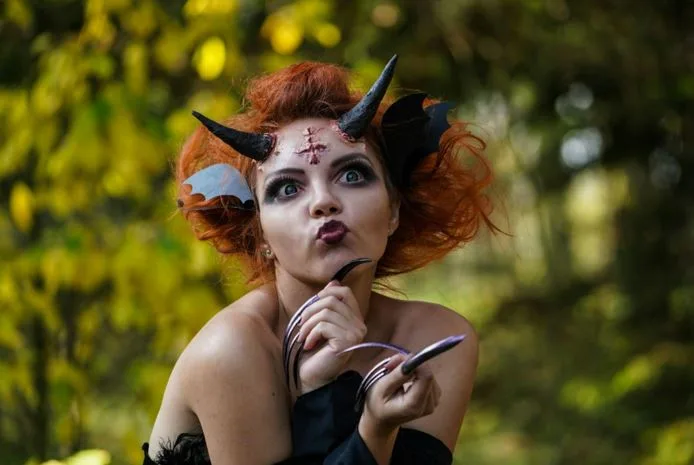When Costume Trends Go Viral: The Cultural Power of Costume Fashion
Every year, whether for Halloween, carnivals, fan conventions, or themed parties, new waves of costume trends take over social media feeds. Searches for everything from superhero suits to sexy men costumes surge, showing how personal style and cultural expression collide in playful and sometimes provocative ways. Costumes are no longer just about dressing up, they have become symbols of identity, belonging, and commentary in a fast-paced digital age.
Social Media as the New Runway
The rise of platforms like TikTok and Instagram has transformed how costume fashion spreads. Instead of browsing catalogs or waiting for seasonal store displays, people now look to short videos, viral challenges, and influencers for ideas. A single clip of a creative or daring costume can trigger thousands of imitations worldwide.
Unlike traditional fashion cycles, which run seasonally, viral costume trends can emerge overnight and disappear just as quickly. This creates a dynamic cultural space where costumes operate as fast fashion, signaling participation in shared digital moments.
From Screen to Street
Television series, blockbuster films, and celebrity appearances are some of the strongest catalysts for costume booms. When a show like Game of Thrones or Squid Game captures global attention, their distinctive outfits almost immediately dominate costume sales and DIY tutorials.
This phenomenon isn’t new, Hollywood has long influenced what people wear. But the speed and scale of digital amplification have intensified the impact. Today, a costume can jump from a streaming release on Friday to trending hashtags by Monday, demonstrating how entertainment culture and personal fashion merge in real time.
Costumes as Social Commentary
Costume fashion also serves as a medium for social and political commentary. Satirical outfits mimicking political figures, parody costumes referencing viral news, and creative reinterpretations of cultural symbols all show how people use dress as a form of speech.
The Smithsonian notes that throughout history, clothing has acted as a “mirror of society,” reflecting both cultural values and political climates. Costumes, as an exaggerated form of fashion, often highlight these dynamics most vividly.
In recent years, costumes inspired by memes or internet phenomena illustrate how online humor migrates into physical spaces. Wearing a costume becomes a way of signaling cultural awareness and belonging to a digital community.
Gender, Identity, and Expression
Costume trends have also opened new spaces for gender play and personal identity. For example, the popularity of bold, body-revealing costumes, from sexy men costumes to risqué reinterpretations of classic characters, highlights shifting cultural norms around masculinity and self-expression.
For many, these costumes are less about performance and more about empowerment. They allow individuals to explore sides of themselves they may not express in everyday life, while also challenging societal expectations. The costume industry, once heavily gendered, is now embracing more inclusive and diverse options, offering men, women, and nonbinary individuals a wider spectrum of styles to explore.
The Business of Going Viral
Behind the cultural buzz lies a thriving industry. The global costume market is estimated to be worth billions annually, with major spikes during Halloween and regional festivals. Online retailers now compete with fast-moving supply chains that can adapt to viral surges almost instantly.
Retailers track trending hashtags, analyze search spikes, and even pre-design costumes based on anticipated pop culture events. This predictive approach helps them capture the fleeting windows of demand that define viral costume culture.
Local economies also benefit. Seasonal pop-up stores, independent tailors, and even secondhand shops see a rise in activity when costume trends peak. Beyond entertainment, costumes have become a powerful driver of seasonal economic activity.
Risks and Critiques
Not all viral costume trends are celebrated. Issues around cultural appropriation, offensive stereotypes, or safety concerns often emerge alongside surging popularity. The line between playful homage and harmful caricature remains contested, especially in multicultural societies.
Similarly, cheaply made costumes designed to meet viral demand can pose risks, from flammability to poor quality materials. Consumer advocates and safety organizations regularly urge buyers to check labels and certifications before purchasing.
These challenges underline that while costume fashion thrives on spontaneity and expression, responsibility from both creators and consumers remains essential.
Toward the Future of Costume Culture
As digital platforms continue to blur the boundaries between online trends and real-world practices, costume fashion will likely play an even bigger role in cultural conversations. Advances in technology, such as augmented reality filters and 3D-printed accessories, suggest the next generation of costumes may exist simultaneously in virtual and physical spaces.
At the same time, growing emphasis on sustainability could shift costume production toward reusable or rental models, balancing cultural expression with environmental responsibility.
Costumes are no longer seasonal novelties; they are cultural artifacts that embody identity, humor, politics, and creativity. When costume trends go viral, they reveal not only what people are watching or laughing about, but also how they see themselves in the broader cultural landscape.
In a world where fashion, media, and technology intersect daily, costume fashion stands as one of the most immediate and visible reflections of collective culture, a reminder that dressing up is often about much more than the clothes themselves.



